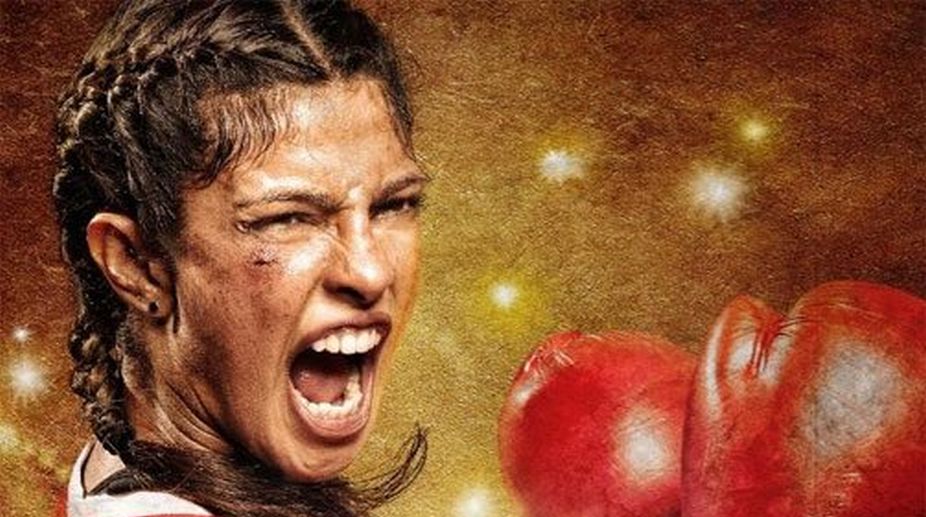Why do we have a very small roster of Indian films centered on boxing as a sport and a physical, social and emotional challenge? The answer is simple. Boxing demands what is commonly known as “performance acting” that demands rigorous training for many months before the actor is trained enough to face the camera. According to Stacey Stocky who teachers at the University of Denver, performance cinema combines both cinema and performance in dynamic ways, defining creative work and instigating the development of new, defined genres. Henry Warwick says that a performance film “sits between traditional, passive, cinematic experience and the dynamic experience of, say, a live music performance.”
Raging Bullis a cult classic today. It is perhaps the first ageless film starring Robert De Niro as Jake La Motta, an Italian American, middleweight boxer who’s self-destructive and obsessive rage, sexual jealousy, and animalistic appetite destroyed his relationship with his wife and family. The 1980 film was directed by Martin Scorsese, produced by Robert Chartoff and adapted by Paul Schrader and Mardik Martin from Jake LaMotta’s memoir of the same name. De Niro is said to have gained around 27 kgs to portray La Motta in his post-boxing years. The film is a cult classic today but when it was released, the audience did not take to it too well for lack of proper promotion, marketing and advertising. Besides, which mainstream audience would really be interested in the life story of a champion who fell beyond resurrection?
Actor, MP and producer, Dev, whose new film Chaampdeals with the highs and lows of a boxer’s life, says, “Can you really believe that boxing was introduced in India and in Kolkata to be particular by a Bengali named Paresh Lal Roy?” He discovered this sport in 1884 and brought it to Kolkata in 1923. Yet, boxing is ignored almost completely as a sport in West Bengal. However, from the official trailers, teasers and song numbers telecast across the clock, Chaamphas one too many song-anddance numbers in varied manifestations with a lot of glamour and chutzpah that might perhaps marginalise the main challenge — boxing. But the story has its strong points. An ordinary boy from a suburban town, Shibaji, is discovered by a boxing trainee and brought to Kolkata to train in boxing. He becomes the champion of champions and then falls completely. How he rises from the debris of his life and reaches the top again makes for the second half of the film.
Bollywood has had its tryst — a small slice — with this contact sport. One of the best examples is Raj N Sippy’s Boxer (1984), which can be counted among the best among Mithun Chakraborty’s sterling performances. Mithun delivered a cutting-edge performance as Shankar, the elder son of a professional boxer who loses his job after losing a bout and turns to alcohol. The son turns to thieving to make both ends meet and ironically, while in jail, he meets a boxing manager who trains him when he is out of prison. Shankar’s life changes forever and he becomes the champion after beating the reigning champion. Shankar takes it as his last fight where his goal is to retrieve his and his father’s lost dignity. But can he leave the ring thereafter?
Ghulam(1998) was a Bollywood adaptation of the film On the Waterfront (1954), which was basically a crime thriller that explored the underhand dealings and dirty politics that dominated professional boxing where boxers are paid to lose so that the organiser can pocket the booty. Aamir Khan had a tough job to fit into the shoes of Marlon Brando who portrayed the role in On the Waterfront. Aamir moved beyond comparisons and did his own bit extremely well in an electrically charged performance that happens to be one of the best in his career. The arrogance that marks his current performances is missing in this one. Anil Sharma’s Apne (2007) was centred on boxing but it branched out from a family story where three generations are boxers with the father, portrayed by Dharmendra, being an excellent coach while his two sons portrayed by his real-life sons, become his pupils. Sunny Deol played the power punching champion and Bobby Deol played the underdog who comes up trumps.
For her award-worthy performance in Mary Kom, fictionalised from the real life story of the rise and fall and rise of Olympic bronze medallist MC Mary Kom who is also a wife and mother, Priyanka says she underwent 45 days of rigorous strength training even when she was travelling. Sources state that to make some scenes look real, the director made Priyanka fight with and confront real life boxers during the scenes.
“A significant aspect of my training for the role in Mary Komwas to try and follow Mary’s regular routine. Besides beginning her day by running a distance of 14 kms followed by stretching exercises, Mary does shadow boxing and goes to the gym in the evenings where she carries out strength training and practices boxing in the ring. The vital aspect is to maintain the coordination of the brain and eye for speed and power, the most important things for any boxer. For me, Mary Komis not just a film. It helped me grow as a person and helped me cope with the loss of my father,” says Chopra.
Roland Barthes in Camera Lucida(1980) wrote, “The power of authentication exceeds the power of representation.”For Saala Khadoos (2016) actor-producer Madhavan picked a real life boxer to perform the main role of a female boxer who surprisingly turned out to be a great actress too. Saala Khadoosis the story of a failed boxer coaching a mean girl to boxing greatness.











